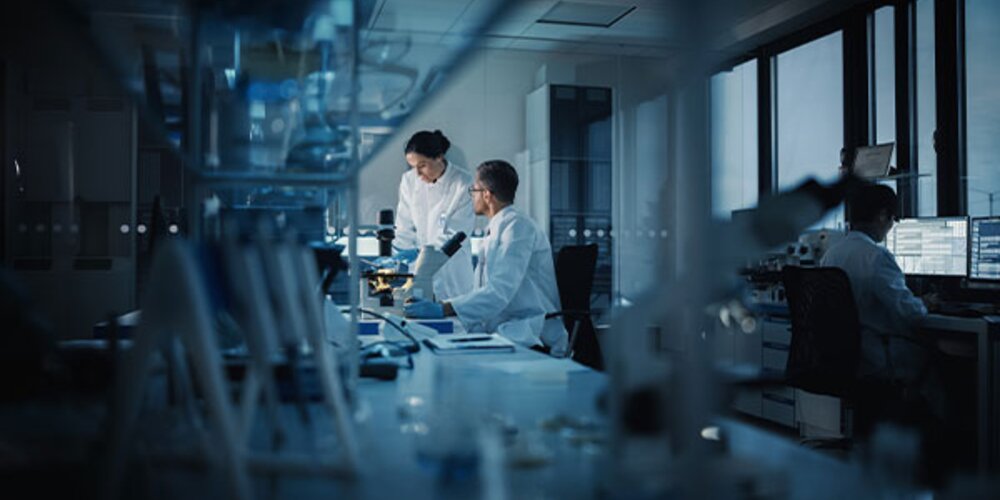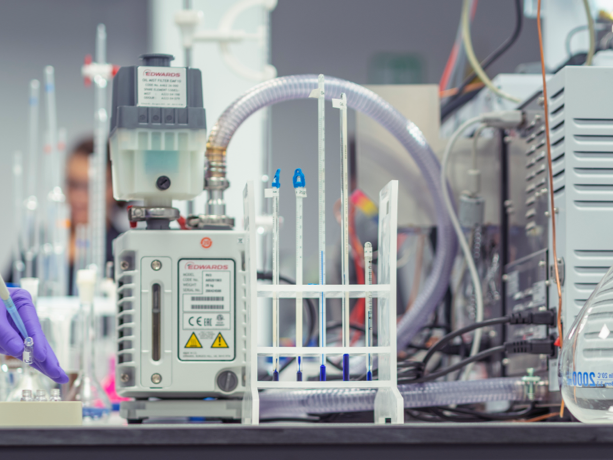Researchers Discover the World’s Toughest Material

Researchers from the Lawrence Berkeley National Laboratory and Oak Ridge National Laboratory (ORNL) have discovered a metallic alloy made up of chromium, cobalt, and nickel. Named CrCoNi, the material has measured the highest toughness ever recorded.
Aside from measuring the highest toughness ever recorded, of any material, researchers also found that CrCoNi is extremely ductile. What’s more, CrCoNi’s strength and ductility actually improves as it gets colder; something that is the opposite to most materials in existence.
CrCoNi is also of interest in that it sits within a class of metals called high entropy alloys (HEAs). High entropy alloys differ from regular alloys in that they contain an equal mix of each element - whereas traditional alloys contain a high proportion of one element, and lower amounts of other elements.
The balanced composition of HEAs appears to give them an extraordinary high level of strength and ductility when stressed - as evidenced by the performance of CrCoNi.
Commenting on CrCoNi, Easo George, the project co-lead at ORNL said:
“When you design structural materials, you want them to be strong but also ductile and resistant to fracture. Typically, it’s a compromise between these properties. But this material is both, and instead of becoming brittle at low temperatures, it gets tougher”.
The project’s other co-lead, Robert Ritchie, a senior faculty scientist in Berkeley Lab’s Materials Sciences Division, provided further information on the nature of CrCoNi, saying that:
“The toughness of this material near liquid helium temperatures (20 kelvin, -424 Fahrenheit) is as high as 500 megapascals square root metres. In the same units, the toughness of a piece of silicon is one, the aluminium airframe in passenger aeroplanes is about 35, and the toughness of some of the best steels is around 100. So, 500, it’s a staggering number”.
Easo George and Robert Ritchie actually began experimenting with CrCoNi nearly a decade ago. Throughout this time, they’ve been creating samples of CrCoNi and lowering them into liquid nitrogen temperatures (around 77 kelvin, -321 Fahrenheit) to discover its strength and toughness.
Whilst CrCoNi is - in itself - exceptional, the findings of the project may have broader implications for the metallurgical community as a whole.
As Ritchie says, “it’s amusing because metallurgists say that the structure of a material defines its properties, but the structure of CrCoNi is the simplest you can imagine - it’s just grains”.
Andrew Minor, another scientist on the project added that, “However, when you deform it, the structure becomes very complicated, and this shift helps explain its exceptional resistance to fracture”.
Whilst CrCoNi is certainly an interesting development, does it have any practical applications?
Although it is currently expensive to create CrCoNi and other related HEAs, Easo George thinks that they could find use in niche applications and environments such as space - where the material would be able to withstand the freezing temperatures.
Want to know the composition of a material?
Whilst you may not be dealing with a material as exotic as CrCoNi, if you need to identify the composition of a material, The Lab can help.
Our metallurgists and materials scientists are able to offer a broad range of materials testing services, including (but not limited to):
- Sample handling, preparation and sectioning.
- Preventative and reactive metallurgy investigations.
- Material failure investigations.
- Third party review services and witnessed independent analysis.
Contact us today and find out how The Lab can support your material identification needs.
Explore The Lab’s materials testing services now
For more materials science, materials testing and inspection insights and news, explore The Lab’s News and Knowledge Hub…
Researchers Discover Material With ‘Memory’ | Glossary of Metallurgy Terminology | What Is Non-Destructive Testing (NDT)?
- Author
- Dr Caroline Young
- Date
- 19/12/2022
